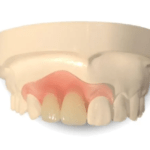Dental filling front teeth
For dental fillings in front teeth, consider composite fillings for durable and less invasive restoration. These fillings can improve function and appearance, blending seamlessly with natural teeth.
As an increasingly popular choice, composite fillings offer long-lasting results without requiring more extensive procedures like crowns or veneers. With composite fillings, you can restore your smile confidently while maintaining the health and integrity of your front teeth.
If you want to address cavities or damage on your front teeth, composite fillings provide a reliable and aesthetically pleasing solution that can enhance oral health.
Introduction to Front Teeth Dental Fillings
Enhance your smile with composite fillings for front teeth. These fillings restore both function and aesthetics effectively. Durable and minimally invasive, they offer a lasting solution for chipped or decayed front teeth.
Front teeth dental fillings: composite fillings enhance both aesthetics and function.
Importance of aesthetics: composite fillings match natural tooth color, improving smile appearance.
Functionality and oral health: composite fillings restore tooth structure, aiding in oral health maintenance.
Types of Fillings for Front Teeth
Composite resin fillings: These are made of a mixture of glass or quartz filler that provides good durability and resistance to fracture in small to midsize fillings that need to withstand moderate pressure from the constant stress of chewing. They can be used on either front or back teeth.
Porcelain fillings: also known as inlays or onlays, they are created in a lab and then bonded to the tooth. They can be matched to the tooth’s color and resist staining. Porcelain fillings are often used for inlays, onlays, crowns, and aesthetic veneers.
The Filling Procedure
Regarding dental filling front teeth, composite fillings are popular for restoring function and appearance. These durable fillings are less invasive than crowns or veneers, providing long-lasting results with minimal discomfort. Say goodbye to chipped front teeth with composite fillings that blend seamlessly for a natural smile.
Assessment and preparation: the dentist will examine and prepare the affected tooth for the filling procedure.
The dentist will carefully fill the cavity with composite material to restore the tooth’s structure.
Aftercare and recovery After the procedure, maintain good oral hygiene and attend follow-up appointments for optimal healing.
Duration and Durability
Average lifespan of front teeth fillings: the average lifespan of fillings in front teeth can vary depending on several factors. However, they can last for five to seven years on average with proper care and maintenance.
Factors affecting longevity: the durability of front teeth fillings can be influenced by various factors, such as the type of filling material used, the size and location of the filling, oral hygiene practices, and chewing habits. It’s essential to visit your dentist regularly for check-ups to ensure the longevity of your front teeth fillings.
Comfort and Sensitivity
Managing discomfort during the procedure: dental filling procedures can cause pain, but dentists use local anesthetic to ensure a pain-free experience. Patients may feel pressure or minor sensitivity during the process, but using an anesthetic helps manage any potential discomfort effectively.
Post-procedure sensitivity: after the dental filling procedure, some patients may experience sensitivity to hot, cold, or sweet foods and beverages. This sensitivity is typically temporary and should subside within a few weeks. Using toothpaste designed for sensitive teeth and avoiding extreme temperatures can help manage this sensitivity effectively.
Cosmetic Considerations
Dental filling of the front teeth is an important cosmetic consideration for many people. When it comes to color matching with natural teeth, ensuring that the filling blends seamlessly for a natural look is essential. Moreover, the before and after aesthetic improvements can significantly impact a person’s smile and overall appearance. Composite fillings offer a tooth-coloured solution that can restore the front teeth without compromising aesthetics. These durable and long-lasting fillings provide a cost-effective and minimally invasive option for addressing tooth decay or chipped front teeth. However, it’s important to note that fillings may have disadvantages, such as susceptibility to staining and potential tooth weakening. Despite this, composite fillings remain a popular choice for addressing cavities on front teeth due to their ability to combine functionality with aesthetic appeal.
Preventing Future Cavities
Oral hygiene for filled teeth: proper oral hygiene is essential for maintaining the health of filled teeth. Brushing twice a day and flossing daily can help prevent future cavities. Using fluoride toothpaste and mouthwash can also strengthen the teeth and prevent decay.
Regular dental check-ups: regular visits to the dentist for check-ups and cleanings are crucial for maintaining the health of filled front teeth. The dentist can monitor the condition of the fillings and identify any potential issues early on, preventing future complications.
Alternatives to Fillings
Enhance your smile with composite fillings for front teeth, a popular alternative to traditional options. These fillings effectively restore both function and aesthetics, offering durability with minimal invasiveness compared to crowns or veneers. Say goodbye to damaged front teeth with long-lasting composite fillings.
For front teeth, there are two main alternatives to traditional fillings: dental crowns and veneers. While fillings are a reliable and standard treatment for tooth decay, they may not be the best option for cosmetic purposes. Dental crowns, or caps, can cover the entire tooth to improve its appearance and strength. Veneers are thin shells bonded to the front of the teeth to correct minor imperfections. It is essential to consult with your dentist to determine whether these alternative treatments are appropriate for your case.
When to consider alternative treatments: If you have extensive tooth decay, a filling may not be enough to restore the tooth’s function and appearance. In these cases, dental crowns or veneers may be a better option. Additionally, if you are looking for a more cosmetic solution to improve the appearance of your front teeth, crowns or veneers may be a good choice. However, it is essential to note that these alternative treatments are often more expensive and require more extensive tooth preparation. Your dentist can help you determine the best action based on your needs.
Frequently Asked Questions
Can you get fillings in your front teeth?
Composite materials can be used to fill front teeth and restore function and appearance. These durable, less invasive fillings provide a long-lasting solution for damaged front teeth.
How long do fillings last in front teeth?
Composite fillings on front teeth typically last 7-10 years, providing durability and aesthetic appeal compared to other options.
Conclusion
Dental fillings for front teeth are a reliable solution for restoring function and appearance to damaged teeth. Composite fillings have become increasingly popular due to their durability, longevity, and less invasive nature than other restoration methods. While there may be some disadvantages, such as staining and tooth sensitivity, the benefits of dental fillings far outweigh the risks.
Overall, consulting with a dental professional can help determine the best action to restore your smile.




